|
| *****SWAAG_ID***** | 763 |
| Date Entered | 14/10/2013 |
| Updated on | 14/10/2013 |
| Recorded by | Tim Laurie |
| Category | Standing Stones / Circles |
| Record Type | Archaeology |
| SWAAG Site Name | |
| Site Type | |
| Site Name | |
| Site Description | |
| Site Access | Public Footpath |
| Record Date | 01/10/2013 |
| Location | Galloway. Dumfries. The Twelve Apostles Stone Circle.NX947794 |
| Civil Parish | Not known |
| Brit. National Grid | |
| Altitude | |
| Geology | Glacial erratic granite and other boulders of local origin. |
| Record Name | Some Galloway Stone Circles 4. The Twelve Apostles Stone Circle near Dumfries. |
| Record Description | The Twelve Apostles Stone Circle is located 2.5 mils NE of Dumfries in pasture close to the Cluden Water River. The stone circle is accessible from the B729 road near the junction with the A74.
Whereas the stone circle is described (e.g. Thom and Thom 1988, pp) as having eleven stones in situ, several large stones of the ring are not earthfast but lie prone on the surface and appear to have been pulled out. There is one fragment of a larger stone and in at least one instance two or three stones lie together as though roughly replaced. In short, the circle seems to have been in part 'rebuilt'.
It has been noted that 'Twelve Apostles' for an eleven stone ring is justified by the removal and destruction of the stone thought to represent Judas.
My view is that the presence of surface boulders grouped together indicates that there were originally many more stones in this damaged ring. |
| Dimensions | 90m *80m approximately |
| Geographical area | |
| Species | |
| Scientific Name | |
| Common / Notable Species | |
| Tree and / or Stem Girth | |
| Tree: Position / Form / Status | |
| Tree Site ID | 0 |
| Associated Site SWAAG ID | 0 |
| Additional Notes | This stone circle is comparable in dimensions and probably in concept with Long Meg and her Daughters, near Penrith, (see previous SWAAG Record No 762). The stones of both rings are of similar glacial erratic boulders.
However, Long Meg is probably better preserved and is chronologically and architecturally more complex- having an outlier standing stone (Long Meg herself)which may predate her Daughters,ie the circle, two internal cairns (now long since removed) and an entrance portal feature. Furthermore, Long Meg is an element within an extended contemporary prehistoric landscape complex which included the Mayburgh and King Arthur's Round Table henges, Little Meg cairn circle and most significantly, the large earthwork (causewayed?) enclosure visible on aerial photographs which is immediately adjacent to the Long Meg and her Daughters Stone Ring. |
| Image 1 ID | 4777 Click image to enlarge |
| Image 1 Description | The Twelve Apostles stone circle from the B729 road. This very large ring can only be photographed from a distance and the image needs a close look to see the stones which are difficult to see in grass pasture. | 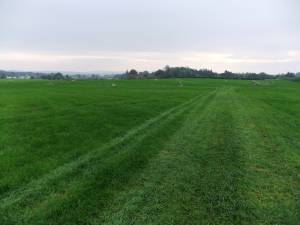 |
| Image 2 ID | 4778 Click image to enlarge |
| Image 2 Description | Detail of the perimeter of the stone circle. | 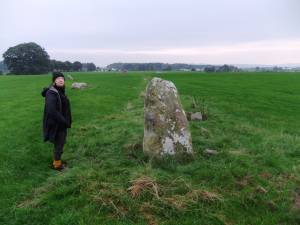 |
| Image 3 ID | 4779 Click image to enlarge |
| Image 3 Description | Detail of stones laid on the surface, including a fragment of a larger stone, clearly broken up. |  |
| Image 4 ID | 4780 Click image to enlarge |
| Image 4 Description | Detail of fallen stone or pulled out. | 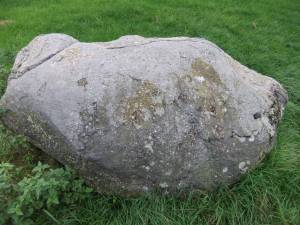 |
| Image 5 ID | 4781 Click image to enlarge |
| Image 5 Description | One of the very large standing stones. |  |
| Image 6 ID | 4782 Click image to enlarge |
| Image 6 Description | The same stone as last. | 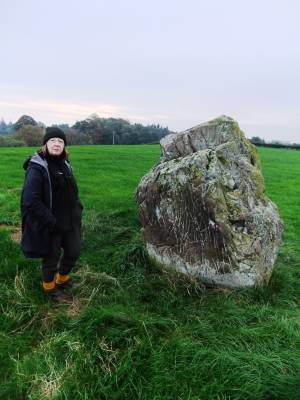 |
| Image 7 ID | 4783 Click image to enlarge |
| Image 7 Description | Very large standing stone. |  |
| Image 8 ID | 4784 Click image to enlarge |
| Image 8 Description | Three stones grouped together on the surface.Previously pulled out? The surface holes on the larger volcanic rock are natural and are not cup marks. |  |
| Image 9 ID | 4785 Click image to enlarge |
| Image 9 Description | Detail of the perimeter of the circle. |  |
| Image 10 ID | 4786 Click image to enlarge |
| Image 10 Description | Detail of the perimeter of the circle. |  |
| Image 11 ID | 4787 |
| Image 11 Description | Large standing stone |  |
| Image 12 ID | 4788 |
| Image 12 Description | Fallen stone |  |
| Image 13 ID | 4789 |
| Image 13 Description | Detail of perimeter. |  |
| Image 14 ID | 4790 |
| Image 14 Description | The complete 90m diameter ring of stones, difficult to see in grass. | 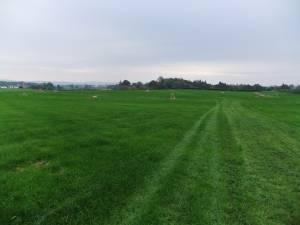 |













